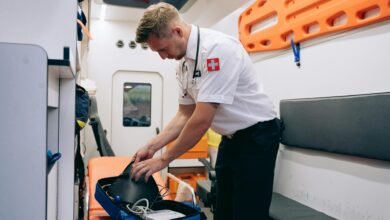Optimizing Revenue Integrity: Best Practices for Hospital Charge Capture

In today’s healthcare landscape, where financial pressures and regulatory oversight are increasing, effective charge capture is critical for hospital sustainability. It directly impacts a hospital’s revenue cycle, reimbursement accuracy, and overall financial performance. Yet, many healthcare organizations still struggle with missed charges, poor documentation, and inconsistent processes. This article explores best practices hospitals can adopt to ensure accurate and compliant charge capture, while improving efficiency and supporting financial health.
Understanding Charge Capture Workflows
In Hospital Charge capture Best practices is the process of translating a patient’s clinical services into billable charges. This seemingly straightforward task becomes complex in multi-departmental hospital settings. Emergency departments, surgical suites, radiology, and nursing units all play a role in initiating or validating charges. The workflow typically involves providers documenting procedures and services, which are then coded and entered into the hospital billing system.
Charge capture may occur manually or through automated systems integrated into the electronic health record (EHR). Unfortunately, manual entry often leads to human error, while system limitations can result in missed opportunities to capture revenue.
Common Challenges in Hospital Charge Capture
Several challenges plague hospitals in their charge capture efforts:
- Missed Charges: Services rendered but not documented or billed due to workflow lapses.
- Documentation Gaps: Incomplete or unclear clinical documentation that prevents accurate coding.
- Technology Barriers: EHRs or charge capture tools not optimized for seamless integration.
- Lack of Training: Staff unfamiliar with charge protocols, leading to inconsistencies and compliance risks.
These issues create downstream problems, including claim denials, delayed reimbursement, and compliance exposure.
Best Practices for Accurate and Efficient Charge Capture
To mitigate these risks and maximize charge accuracy, hospitals should adopt the following best practices:
1. Standardize Documentation Protocols
Ensure that all departments follow a consistent approach to documenting services. Standard templates, prompts, and clinical pathways can help improve completeness and clarity.
2. Implement CDI Programs
Clinical Documentation Improvement (CDI) teams work with providers to align documentation with coding and billing requirements. This boosts charge accuracy and reduces compliance risk.
3. Conduct Regular CDM Audits
The Charge Description Master (CDM) should be routinely reviewed to ensure it reflects current codes, pricing structures, and payer requirements.
4. Integrate Technology with EHRs
Integrated systems allow for automatic charge generation based on clinical events, reducing reliance on manual input and minimizing errors.
5. Use Real-Time Charge Reconciliation Tools
Dashboards and reconciliation tools help departments identify missing or duplicated charges before they impact claims.
Role of Technology and Automation
Modern technology is transforming charge capture. Sophisticated systems use AI and machine learning to detect patterns and flag anomalies. Mobile charge capture tools enable providers to record services in real time, even at the bedside.
By automating routine tasks and enhancing visibility, technology supports proactive charge management and reduces administrative burden.
Compliance and Regulatory Considerations
Hospitals must align charge capture practices with CMS regulations and private payer policies. Key compliance strategies include:
- Conducting internal audits for charge accuracy
- Monitoring for upcoding or duplicate billing
- Maintaining proper documentation to support every charge
Compliance is not just about avoiding penalties—it’s about building trust with patients and payers.
Staff Training and Organizational Culture
Charge capture is a shared responsibility. Hospitals must invest in training programs to educate both clinical and administrative staff. Encouraging cross-departmental communication and feedback ensures that staff are aligned with the organization’s revenue integrity goals.
Recognizing and rewarding accurate documentation practices can help build a culture of accountability and excellence.
Metrics and Continuous Improvement
Effective charge capture programs are data-driven. Key performance indicators (KPIs) such as charge lag, missed charge rates, and denial rates due to charge errors provide insights into performance. Benchmarking against peers and using analytics for root-cause analysis enable hospitals to continuously improve their processes.
Case Study Example: Improving Charge Capture in a Community Hospital
A mid-sized community hospital faced recurring missed charges in its radiology department. After implementing an automated charge capture tool integrated with its EHR and retraining technologists on documentation protocols, the hospital saw:
- A 22% increase in captured radiology charges
- A 15-day reduction in average accounts receivable days
- Fewer compliance-related coding errors
This transformation highlighted the power of process standardization and technology alignment.
Conclusion
Accurate and efficient Hospital Charge capture Best practices is not a back-office task—it’s a strategic imperative. By standardizing workflows, leveraging technology, training staff, and monitoring performance, hospitals can drive revenue integrity, ensure compliance, and ultimately improve patient care delivery. In an era of tightening margins and complex regulations, mastering charge capture is more important than ever.




